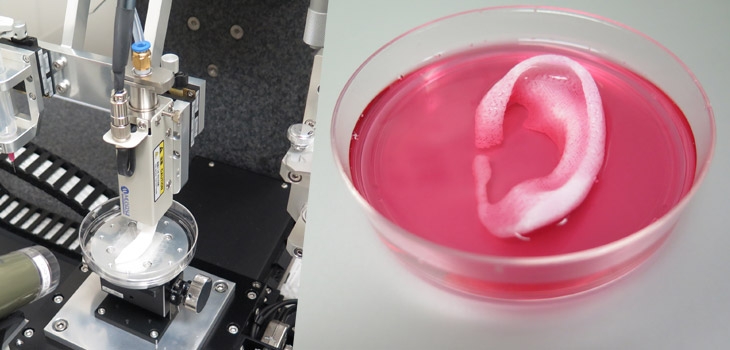
 How 3D printing could save lives
How 3D printing could save lives
Advancements in technology has allowed us to rapidly alter the environment we live in, whether that be through communication or travel we are surrounded by technology, and the more we learn the more technological advancements we make.
People are becoming more dependent on technology and that's resulting in an increased demand for more superior machines to be built in order to help fiction become a reality.
Scientist have created a 3D printer that can make human body parts.
Sounds like something out of a science fiction movie right? But experiments beg to differ, this became a reality through trial and error. When sections of bone, muscle, and cartilage were implanted into animals all three functioned as normal.
Mind blowing right, what does this mean then, will we have unlimited access to organs and other complex human tissue?
Just think no more waiting lists for organ transplants, and if you've ruined your lungs through smoking, don't worry it can be replaced, it will be as easy as pressing a button.
Well maybe I'm getting ahead of myself but if small parts of the human anatomy are being artificially made by a machine of this calibre this means huge advancements in not only technology but medicine.

The idea behind this project was to place individual cells in a specific pattern to replace an injured muscle or bone. But advancements have been delayed due to the difficult task of keeping cells alive.This is because the cells become neglected due to oxygen in tissue thicker than 0.2.
Ah, just when we thought we were all going to have extra muscles and jaws for those unplanned accidents.
Fortunately for us, scientist have come up with a new way of keeping these cells alive! The brains behind this innovative idea at the Wake Forest Baptist Medical Centre have created a new technique that 3D prints tissue filled with micro - pathways, like a sponge this helps nutrients to go through the tissue.

The meshed tissue and organ printed system make a biodegradable plastic like substance that gives structure and gel to help cells grow within and not become 'neglected'.
Animals that had these structures implanted allowed scientists to study how the plastic broke down and became replaced with a natural structural formation of proteins that were made by the cells.
The implants have already imitated the same strength as a human bone, now all that's left to see is whether or not they can stand the test of time.
